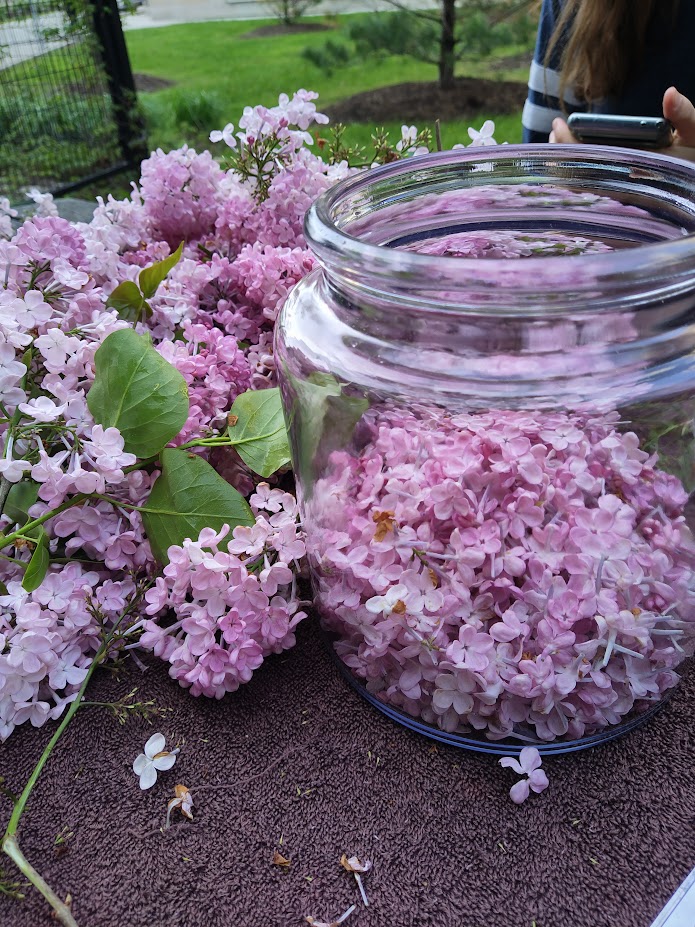
Lilac and Crabapple Hydrosol
The lilac shrub is beautiful and fragrant plant which blooms in the spring and early summer in Ontario.
While not native to Canada, they grow in most southern parts of the country. They have white, pink, or
purple flowers and are members of the olive family.
Crabapple trees are multiple species of trees which flower in the spring and produce fruit in the
autumn. Their flowers can range from a deep pink to bright white. Both native and non-native species
grow in Ontario. The specific species of crabapple analyzed here is unknown.

I’m Rose Anderson-Duvall, an USRA student working in the J. L. Holmes Mass Spectrometry Facility in summer 2023. I am an undergraduate student entering my third year of Biopharmaceutical Science at
uOttawa. My mother instilled a love of science in me when I was very young, and I never grew out of it. Studying hydrosols is, among many other things, a brilliant insight into the metabolites of plants, a perfect intersection between my two passions, biology and organic chemistry.
Working in this laboratory, I’ve learned how to analyze, identify, and quantify compounds
using the GC-MS in addition to learning various extraction techniques for making hydrosols.
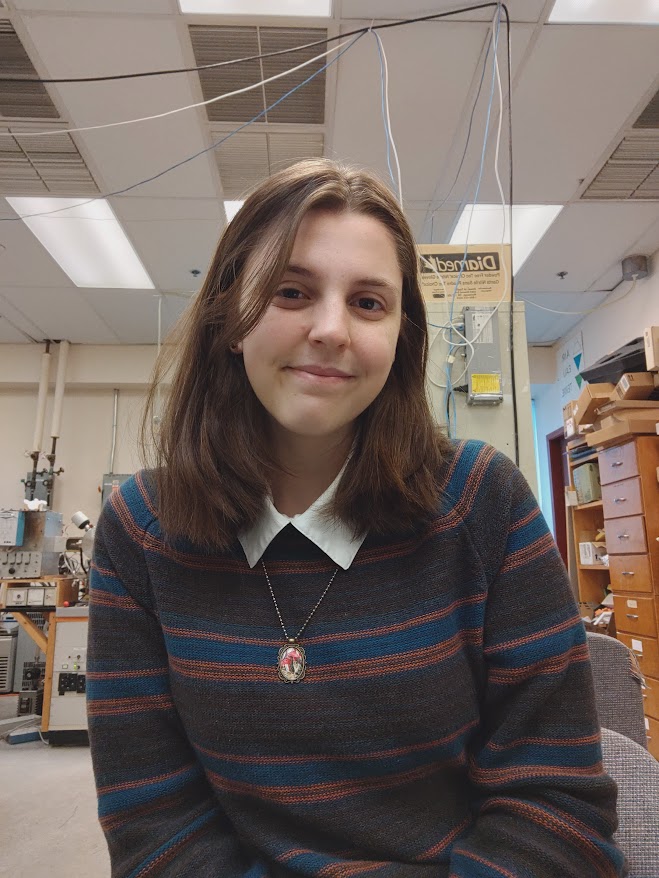
Creation of Hydrosols
252.4g of crabapple flowers and leaves were placed into a microwave extraction vessel. A 400mL beaker was placed inside the vessel and an ice cone was fitted to the lid. The flora was microwaved for 9 minutes, at which point the liquid that was collected in the beaker was poured into a bottle. A new ice cone was fitted to the lid and the process was repeated twice more.
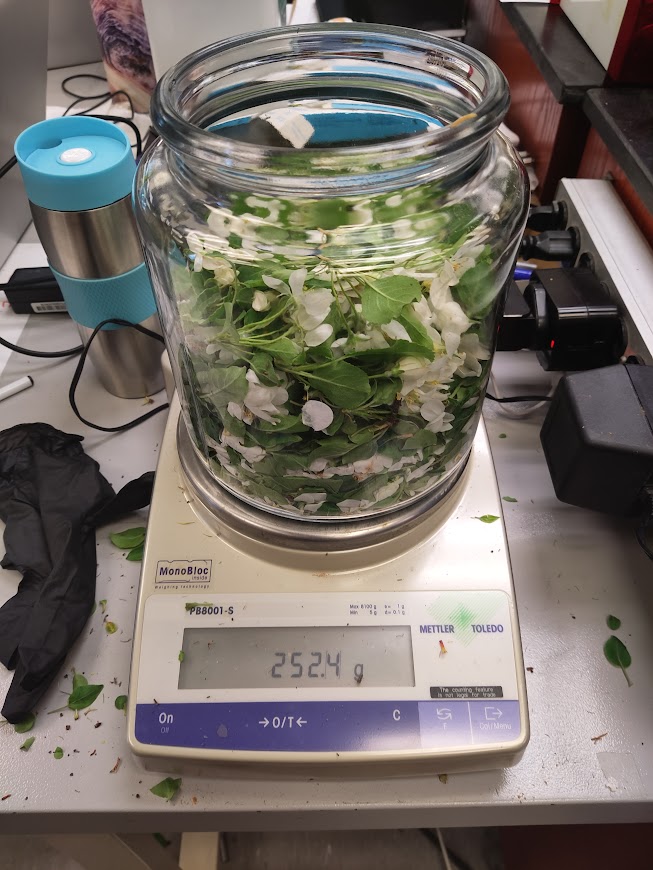
For the lilac, 250g of lilac flowers were placed into the vessel and the distillation process was carried out the same as above.
Both the lilac and the crabapple hydrosols gave off an unpleasant and nauseating smell and smelled nothing like either flower.
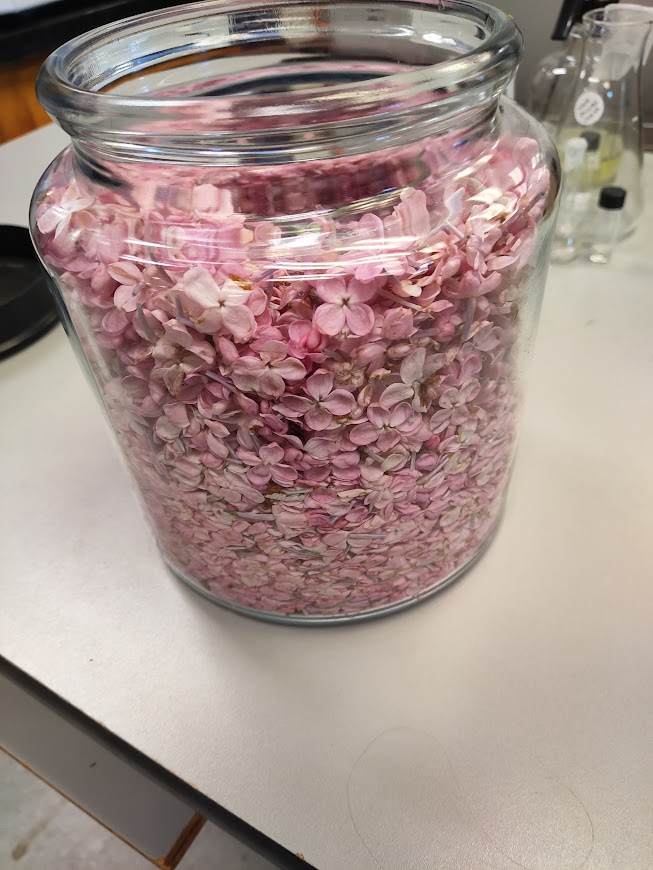
Analysis of Hydrosols
Both hydrosols were put through SPE (solid phase extraction) prior to being injected into the GCMS. This is done to remove the water from the hydrosols and replace it with an organic solvent to not interfere with the results. The SPE process also ensures the removal of any larger physical impurities which may damage the column if injected.
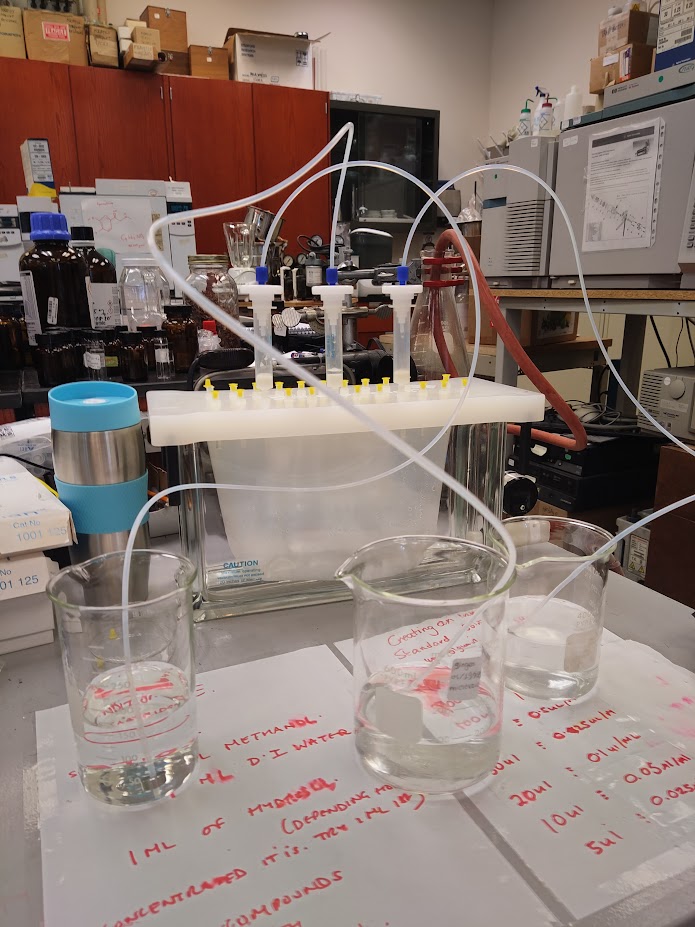
The crabapple hydrosol was very simple and only had four compounds in it. All compounds were at low concentrations, the highest of which is benzyl alcohol, which is present in the crab apple hydrosol at 0.004g/L. The hydrosol also contained carvacrol, at 0.003g/L as well as 3-hexen-1-ol, also at 0.003g/L. The hydrosol also contains a small amount of coumarin, at 0.002g/L.
The lilac hydrosol was much more complex than the crab apple hydrosol, containing 24 compounds. The compound present in the highest concentration is lilac aldehyde A, at a concentration of 0.028 g/L. Other notable compounds include benzyl alcohol, which was also in crabapple, which is present at 0.006g/L.
One compound in the lilac hydrosol that still needs to be positively identified is a bromine containing compound of mass 485.8. It is likely a PCDD based on literature research, but anyone able to help us confirm the identity of this compound is encouraged to email us! PCDDs are persistent, toxic, organic pollutants which can persist in the environment for over one hundred years and has been historically used in herbicide, making it a likely candidate for this unknown.
Conclusion
All the compounds in both the lilac and crabapple hydrosols are in relatively low concentrations, making them inideal candidates for starting materials for drugs or other pharmaceutical applications. In terms of cosmetics or aromatherapy applications, both the crabapple and lilac hydrosols had the same unpleasant and nauseating smell once microwaved, making their hydrosol an unappealing target for any scent-related uses.
